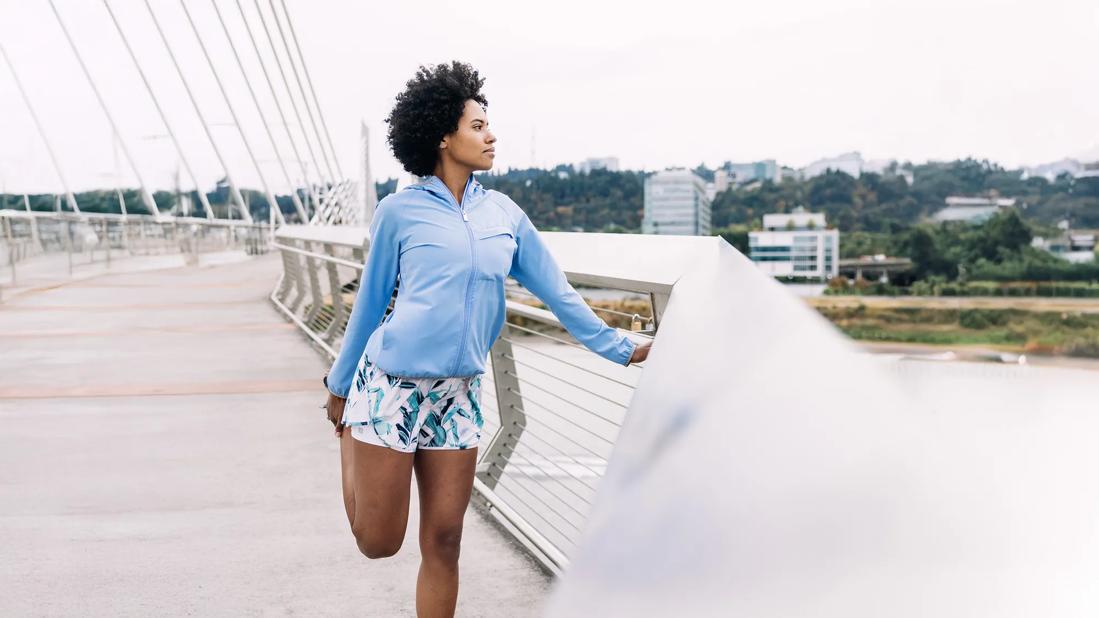5 Easy Exercises and Stretches To Help With Flexibility
Exercising and stretching your lower back, hamstrings, hips and quads can greatly improve your physical well-being

Limiting your physical activity or sitting for long periods of time can cause your muscles to lose their flexibility and range. And as you age, your muscles gradually become shorter and begin to lose some elasticity. Aging can also decrease the range of motion in your hips, shoulders and spine.
But the good news is that it’s never too late to find ways to improve your flexibility. When you work flexibility exercises and stretches into your normal exercise routine, it can greatly improve your physical well-being and help offset the effects of aging.
Flexibility exercises and stretches
Exercise physiologist Chris Travers, MS, explains that flexibility refers to your muscles’ and joints’ capacity to move through their full range of motion without pain or stiffness.
You can become more flexible by engaging in activities that stretch and lengthen your muscles, such as:
But consistency is key. If you find it difficult to make time for an entire class, simply setting aside a few minutes every day for dynamic stretching can really go a long way in improving your muscle elasticity, joint mobility and overall physical function.
“Dynamic stretching better prepares your body for the different types of movement you’ll use throughout the day and in upcoming workouts,” says Travers.
These five stretches and exercises are a good place to start if you’re looking to improve your flexibility.
1. Lower back hamstring stretch
- Start by standing with your feet together, with one hand placed firmly on the back of a chair or countertop for support, and the other hand out in front of you.
- Keeping your back straight and your knees slightly bent, slowly lean forward from your hips.
- Reach toward the floor as far as you feel comfortable until you begin to feel the stretch in your lower back and hamstrings. Avoid pushing too hard to prevent injury.
- Hold this position for 20 to 30 seconds, while taking deep, relaxing breaths.
- Slowly return to standing position and then repeat this process two more times.
2. Seated hamstring stretch
- Start by sitting near the front edge of a chair with your feet flat on the floor.
- Extend one leg out in front of you and rest your heel on the floor while keeping your knee straight.
- Keeping your spine straight to avoid any unnecessary strain, gently lean forward from your hips (not your lower back) while reaching toward your extended toes. You should feel a gentle stretch along the back of your leg. If you feel pain, you’ve gone too far.
- Hold this stretch for 20 to 30 seconds while taking deep, relaxing breaths.
- Return slowly to an upright seated position and switch legs.
- Repeat this process twice for each leg.
3. Quad stretch
- Start in a standing position with your feet shoulder-width apart.
- Bend one knee, bringing your heel up toward your glutes.
- Reach back and hold the top of your foot with the hand on the same side. If you need extra support, you can brace yourself by holding onto a wall, chair or countertop with your other hand.
- Gently pull your foot toward your glutes, encouraging your knee to bend farther. You should feel a stretch along the front of your thigh.
- Hold this stretch for 20 to 30 seconds while taking deep, relaxing breaths.
- Slowly release your foot and return to a standing position.
- Repeat this process twice for each leg.
4. Hip stretch
- Start by sitting firmly on a chair with your feet flat on the floor.
- Cross one leg so your ankle is placed on top of the opposite thigh, just above your knee. If this proves difficult on its own, you can use a stretch band for additional support.
- Gently pull the top knee toward your chest and the center of your body. You should feel a stretch in the hip and buttocks area of your crossed leg.
- Hold this position for 20 to 30 seconds while taking deep, relaxing breaths.
- Slowly release the stretch, returning to your starting position with your feet flat on the floor.
- Repeat this stretch twice for each leg.
5. Piriformis and hip stretch
- Start by sitting firmly on a chair with your feet flat on the floor.
- Cross one leg so your ankle is placed on top of the opposite knee, forming a figure-four shape with your legs.
- Gently lean forward by hinging from your hips, keeping your spine straight to avoid strain. As you lean forward, you should feel a stretch in your hip, piriformis muscle and glute areas of the crossed leg.
- For a deeper stretch, gently press down on the knee of your crossed leg.
- Hold this position for 20 to 30 seconds while taking deep, relaxing breaths.
- Slowly release the stretch, returning to your starting position with your feet flat on the floor.
- Repeat this stretch twice for each leg.
Improved flexibility equals healthier lives
“There truly is a variety of flexibility exercises you can do,” Travers says. “If you can find a few you enjoy, you’ll reap the benefits of having an easy, go-to routine that will become second nature.”
And knowing how to stay flexible can help make you feel better, move more easily, and prevent joint pain and muscle tension down the road.